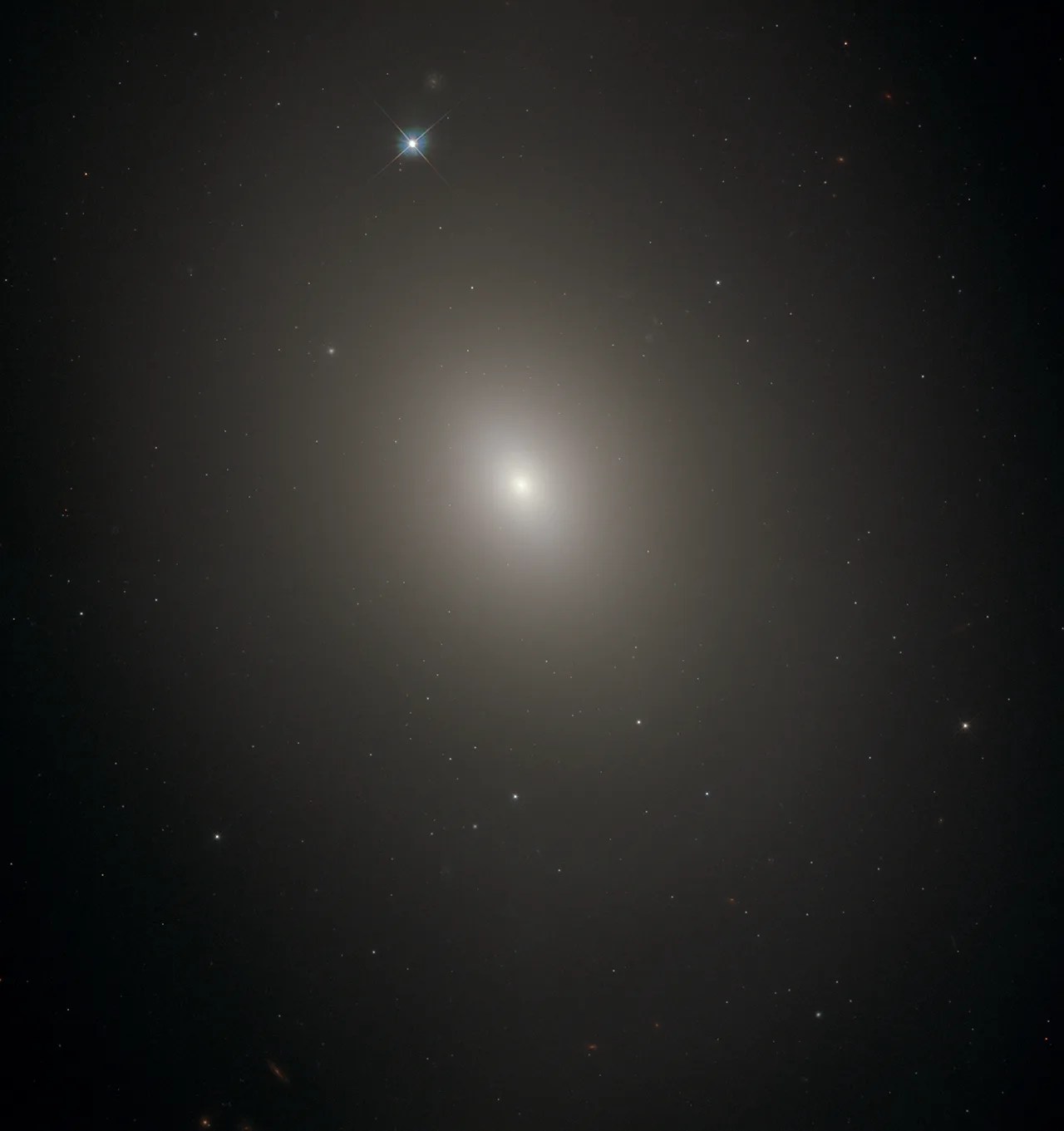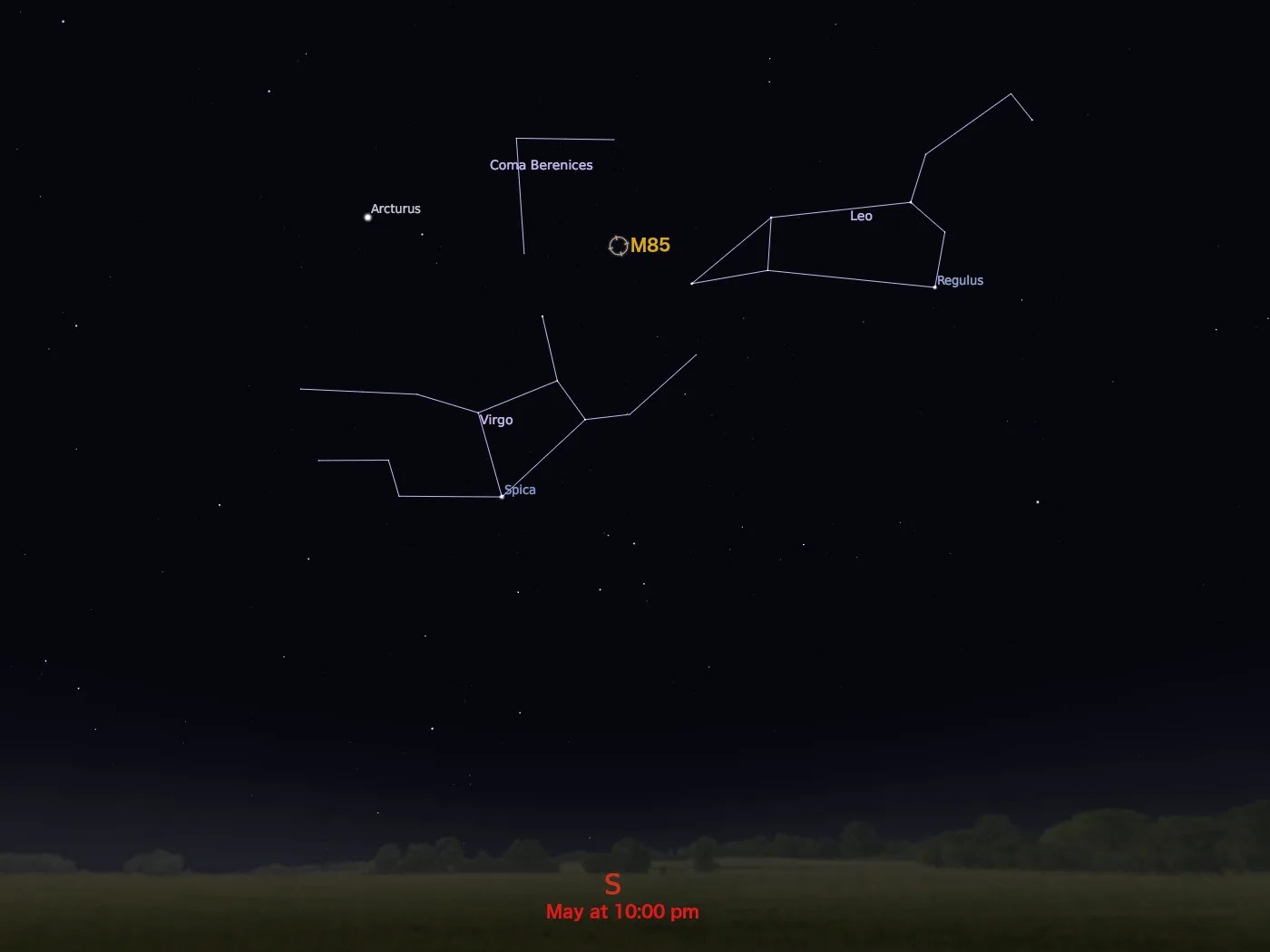Messier 85
This galaxy may be an elliptical galaxy or a lenticular galaxy.
Distance
60 million light-years
Apparent Magnitude
9.2
constellation
Coma Berenices
object type
Galaxy

M85 is either an elliptical or a lenticular galaxy. Lenticular galaxies have qualities of both elliptical and spiral galaxies and are sometimes called armless spirals. M85 is interacting with two neighboring galaxies, the spiral NGC 4394 and the elliptical MCG 3-32-38.
Located in the constellation Coma Berenices, M85 is a member of the Virgo cluster of galaxies and was discovered by Charles Messier’s colleague Pierre Méchain in 1781. It lies approximately 60 million light-years away from Earth and is best seen in May. With an apparent magnitude of 9.2, this galaxy is relatively faint and is not easy to spot with binoculars or small telescopes. In telescopes with 8-inch apertures M85 appears as a dim, elongated patch of light. Larger telescopes will reveal more detail in the galaxy.
About 4 billion to 7 billion years ago, M85 likely merged with another galaxy. M85 contains approximately 400 billion stars, and most of these stars are very old. However, the central region contains relatively young stars, under 3 billion years old, and these stars are thought to have formed in a late burst of star formation activity. The core of M85 may contain a supermassive black hole, and in 2006, astronomers spotted a supernova northeast of the galaxy’s center.
This image combines infrared, visible and ultraviolet observations of M85 taken with Hubble’s Wide Field Camera 3. The center of the galaxy is featured, with M85’s outskirts extending beyond the edges of the frame. The observations were taken to further understand star formation in a variety of galaxies.
For more information about Hubble's observations of M85, see:

Explore Hubble's Messier Catalog
The following pages contain some of Hubble’s best images of Messier objects.

Messier 1 (The Crab Nebula)
Better known as the Crab Nebula, Charles Messier originally mistook Messier 1 for Halley’s Comet, which inspired him to create…

Messier 2
Hubble's image of Messier 2 is comprised of visible and infrared wavelengths of light.

Messier 3
Messier 3 holds more than 500,000 stars.




